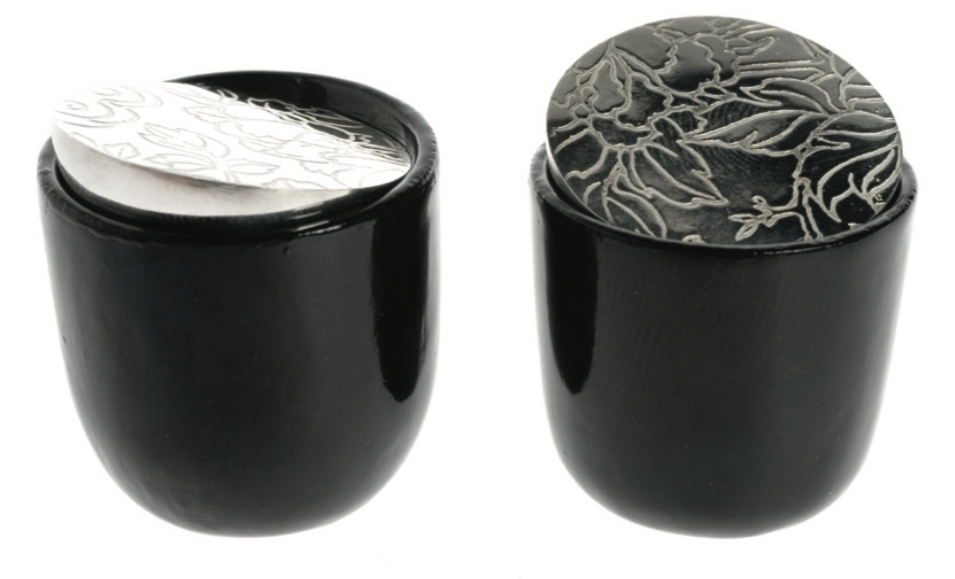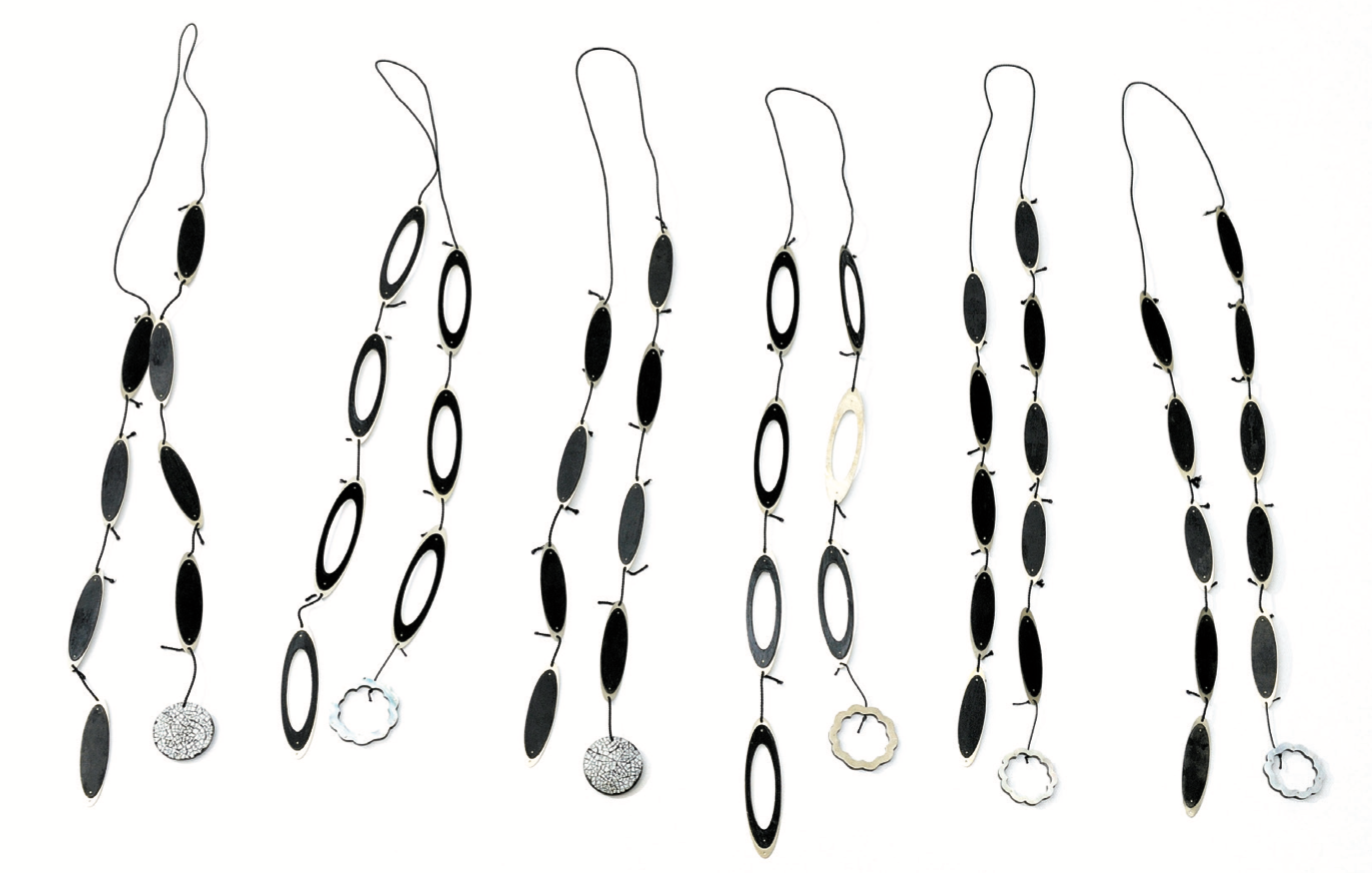Australian designer Bic Tieu marries traditional Asian artisan crafts with modern technologies creating beautiful pieces that connect the past and present, East and West, the old and the new.
While Bic Tieu was studying design and jewellery education at the University of NSW Art and Design, her mentor showed her a book on East Asian Lacquers. This book had a huge impact on Bic’s artistic journey, leading her to become the only Australian practitioner of the Japanese lacquer technique of Maki-e.

“The book was a catalogue of the collection of the Florence Herbert Irving collection, and included lacquer ware from China, Japan and Korea,” said Bic. “I was enthralled by the lustre and beautiful designs of the lacquer objects and I wanted to recreate the objects I had seen in the book.”

But when Bic pushed to learn more about East Asian lacquers, she discovered that there were no Australian-based experts who could guide her and answer her questions. Her curiosity led her to pursue a Master’s research project investigating Vietnamese lacquer and its applications to contemporary jewellery.
Learning about lacquer
Lacquer originated in China and through trade and exchange, it spread throughout the neighbouring countries to East and South East Asia, with each country adapting the material to create their own styles, techniques and artistic expressions. When Vietnam was colonised by the French in 1887, who incorporated their own influence onto local arts, including Vietnamese lacquer painting, which is called “son mai” and has been heavily influenced by Western painting techniques.

After mastering the art of Vietnamese lacquer, Bic began exploring the art of maki-e, a distinctive lacquer technique, unique to Japan. In Japan, lacquer is associated with writing boxes, tea caddies and other forms of containers. Maki-e is one of many specialised forms of lacquering, and involves illustrating surfaces with mainly gold powders, applied through an arduous sprinkling technique, to create an illustrious gold surface.
With the help of Melbourne gallerist, Leslie Kehoe, an expert, scholar and creator of Japanese crafts, Bic was able to secure professional training in maki-e at the world-famous Japanese lacquer studio Kitamura Koubou, where she studied from 2009 to 2011. “Lacquer is a very difficult and unforgiving medium – it is both beautiful and mysterious,” says Bic.
Exploring cultural identity
Bic uses the medium of lacquer to explore cultural identity and trans-nationalism, a theme that is particularly important to her, due to her family history. Many of her artworks have an autobiographical theme, interlinked with her exploration of cultural identity.
“Since starting a PhD program at the Australian National University in Canberra, I have started to examine my own identity,” said Bic. “My research is an examination of myself as a South East Asian-Australian woman living between cultures. I reflect on my own experiences and my migration to Australia, and the intercultural connections of life living between the eastern and western cultural spheres.”

Her jewellery artwork entitled Moon Light Sea Series tells the story of her parents’ journey from Vietnam as boat people during the 1978 exodus. “The Vietnamese Hoa (Chinese from Vietnam) people were unloaded onto uninhabited islands where I was born,” said Bic. Moon Light Sea Series consists of a ring, representing the moon and two vessel-shaped brooches, representing Bic’s parents out at sea. The jewellery items are made from gold leaf, Japanese lacquer, mother of pearl, sterling silver and stainless steel. Bic says she tried to capture a “sense of hope, fear and courage” while “exploring migration and diaspora through the visual language of forms and materials.”
In 2017, Moon Light Sea Series was highly commended as a Finalist in the Profile ’17 MGA-NSW Biennial Curated Award Exhibition; it was selected as a Finalist in the 2018 National Contemporary Jewellery Award at Griffith Regional Art Gallery; and in 2019, it was selected as a Finalist for the Contemporary Jewellery ’19 Biennial Jewellery Awards and Exhibition at the Toowoomba Regional Art Gallery.
Another aspect of Bic’s theme of trans- nationalism is to explore how objects depict cultural identity.
“Living in a multicultural context has definitely influenced me,” said Bic. “Growing up in Australia in a Buddhist Chinese Vietnamese immigrant family household, I was exposed to a lot of veneration and ancestor worship practices. Things like paraphernalia objects from the temple, the home ancestral shrine, and souvenirs from China and Vietnam were part of my visual landscape. They also served as a contrast to the Australian environment.”
Floral symbolism

Bic has often used Australian native plants such as kangaroo paw to represent her Australian identity in her artwork. In 2019, Bic created two kangaroo paw brooches made of Japanese lacquer, timber ply, sterling silver, mother of pearl powder and stainless steel. The juxtaposing symbolism of the iconic Australian plant and the Japanese lacquer “articulates the conceptual spaces of trans-nationalism.”
The peony also has symbolic meaning to Bic and features in several of her artworks. Her 2019 Re-Confloral pendant, made of sterling silver and stainless steel cable is constructed by layering illustrative motifs of the peony flower in a circular form, blurring the identity of the flower.
Merging past and present
Just as Bic’s artworks depict a merging of different cultures, her technique combines the artistic expertise of the past and present. “I have always been fascinated by different modes of technology and integrate these into my practice,” she said. “As a designer and maker, I work with traditional and contemporary craft base skills and mix in technology.”
In a conference paper presented in 2004, Bic wrote that the laser engraver was “crucial” to her jewellery practice: “Applying graphic design/manipulation allows the visual to be interpreted in a contemporary context, yet the essences of these images are still maintained through the style of the pictorial language. The surface takes on a laser rendered style which is achievable through a computer laser engraver. I combine these components with silver smithing techniques to draw on work which reflects historically on a culture of lacquer in pursuit of contemporary jewellery wear.”
